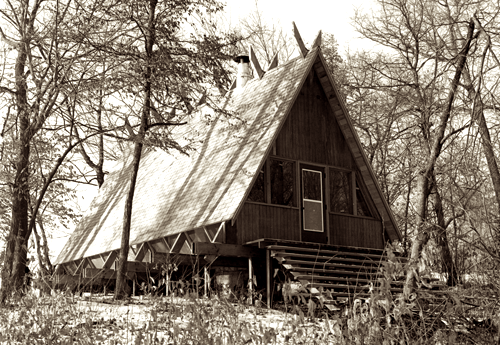Camp Singing Hills, our dedicated troop camp facility, has 160 acres of beautiful forests and prairies, as well as a beach on Fish Lake where campers love to swim and canoe. There are also plenty of opportunities to take part in arts and crafts, archery, outdoor exploration, sports, games, music, and nature education.

Some of Camp Singing Hills summer activities include:
- Archery
- Art
- Biking
- Canoeing
- Kayaking
- Low Ropes Course
- Outdoor skills
- Swimming
- Slingshots
Housing
No matter where you stay on camp, you’ll find a cozy place to rest your head and call home for your visit. Camp Singing Hills has a variety of housing. The type of housing for campers or groups will vary and depend on the session they attend.
- Four-season cabins have bunk beds, sleep up to 16 people, and have electricity.
- Yurts (a cross between a cabin and a tent) have electricity, bunk beds for 12 campers, a domed skylight, and screened windows and doors.
- All housing has outdoor toilets located a short walk away.
Photos
Click any photo below to open a slideshow:
Address & Directions
Camp Singing Hills is approximately a 25-minute drive west of Faribault and a 70-minute drive south of Minneapolis.
49496 193rd Ave
Waterville, MN 56096
Directions from I-35
- Take exit 56 to go west on Highway 60.
- Past Waterville, turn right (go north) on County Road 6.
- Turn left (west) on County Road 14/Ridge Road. Follow for 2 miles.
- Turn right on 193rd Avenue to find Camp Singing Hills.
OR
- From Highway 60, turn right at Highway 13.
- Go North three blocks to Paquin Street, then turn left.
- Go through Waterville. Paquin Street turns into Ridge Road/County Road 14.
- Take Ridge Road/County Road 14 for five miles, then turn right onto 193rd Avenue.
Maps
| Collapse All
History of Singing Hills
1958
Our local Girl Scout council handed Jean Ann Lundholm of Waseca a large order. She was to find a “large camp with its own lake” to be used as a resident camp. For more than a year, Mrs. Lundholm spent her weekends searching, talking to owners, and hiking through the woods.
1959
Jean Ann Lundholm found the Fish Lake site with 160 acres of beautiful wilderness, including a great belt of hardwood forest.

1961
Girl Scouts purchased the camp and Camp Singing Hills was born!
1963
30,809 boxes of cookies were sold at 50 cents a box. The money was used for the first camp payment giving rise to the “Camp That Cookies Built.”
1966
Rustic, 12-day camp sessions were held for Girl Scout Cadettes and Seniors from 1963 to 1966. But, in 1966 ground was broken on the first developments, which included a dining hall, tent platforms, unit shelters, a shower house, and latrines. More than a thousand people joined the dedication of Camp Singing Hills after the buildings were completed the following year.

1965
A “name the camp” contest was held. Mary Schulz of Waterville submitted the winning name: Camp Pahadowa. From the LaKota Indian name meaning Singing Hills.
1966
Resident camp as we now know it became a reality as construction began on dinning hall/kitchen building, 32 platform tents, one central shower house, three latrines and three unit shelters.
1967
After a year of building, a thousand people attended a dedication of the camp. Several other buildings were later constructed, including an A-Frame building, an infirmary, a camp store, a staff house, a large maintenance storage building, and a Green Cathedral area for outdoor ceremonies. Only maintenance building and Green Cathedral area still exist.
1985
A winterized program center with a storm shelter in the basement was built.
2017
Singing Hills became primarily used for troop camp experiences.
Today
The story of Camp Singing Hills continues—be a part of its living history!







